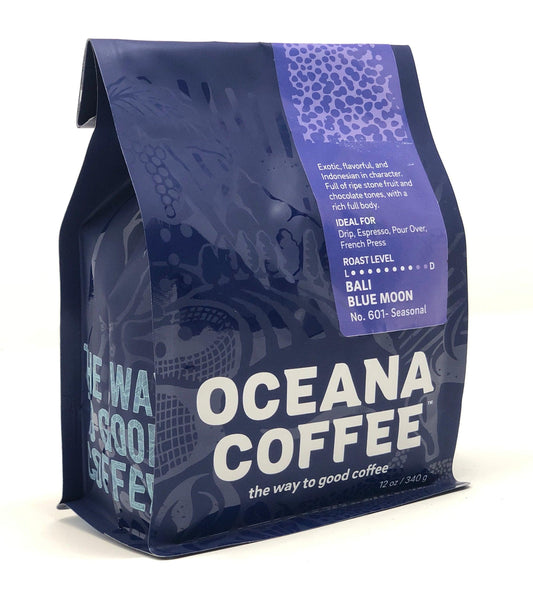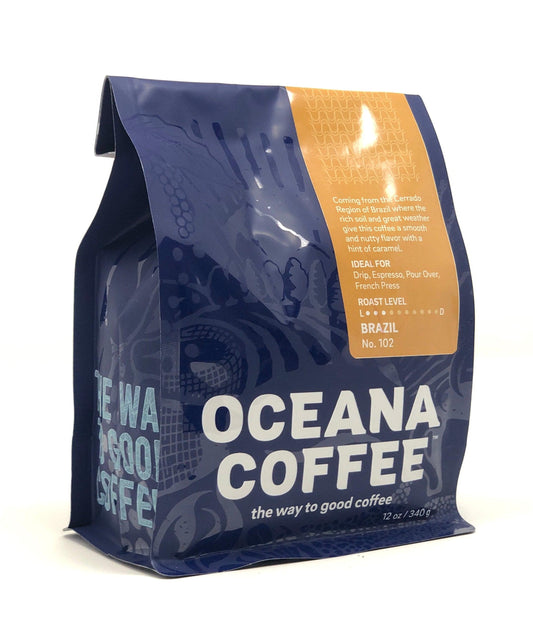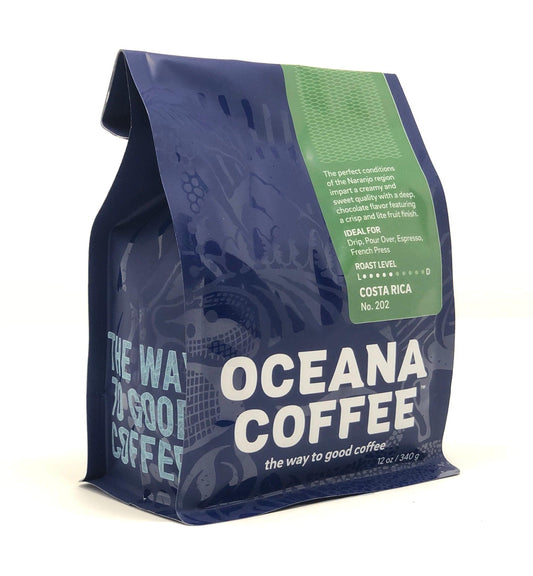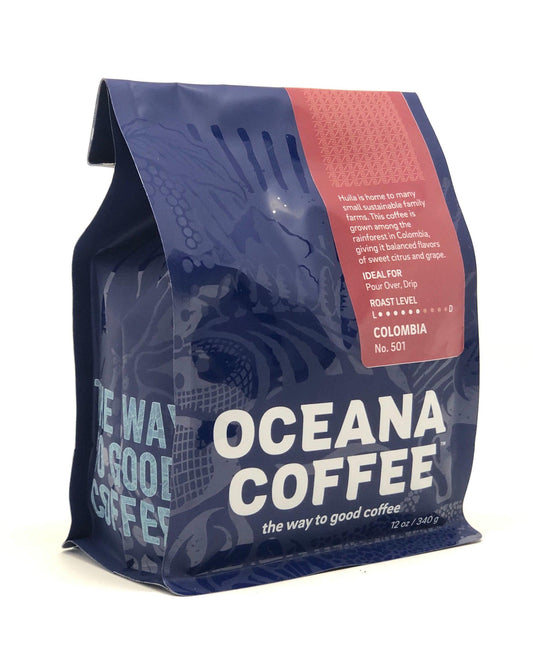If you like coffee and you drink it regularly, or do any reading about coffee, you have probably heard mention of grinders — specifically burr versus blade grinders.
Maybe you've experienced this phenomenon: you buy the best beans available (from Oceana Coffee, of course !), you grind your beans with pride in your own home, but as you sip the fresh coffee you just made, you think, "Something's missing...!" Somehow, it's missed the mark once again.
Lots of factors go into creating a good cup of coffee. Many people think that the key to a great cup of coffee is good coffee beans. While that's obviously a great start, good quality beans don't always guarantee a good outcome.
If you think your morning cup is not reaching its full potential, it's possible that the coffee grinder you're using could be the reason.
"Well," you say, "I just have them grind my coffee for me at the shop!
Problem solved." If we grind it for you, you're right , it will at least be a consistent grind which eliminates some of the problem, but then you deal with the problem of your grinds getting stale more quickly. And besides, nothing surpasses the freshness of beans that have been ground in the moment!
Therefore, investing in a grinder for your home-brewing needs is a great step in the right direction. So let's look at what your home-brewing needs would be and the different kinds of grinders available to you.
Coffee grinders fall under three different categories:
Blade, Burr, and Manual (Hand Grinder).

Blade grinders are a more common option for those just entering the world of fresh coffee. They’re typically more affordable than burr grinders and are very easy to use. But, consistent grind size is much harder to achieve in a blade grinder.
The disadvantage, however, is two-fold: Uneven grounds can lead to a bad tasting cup of coffee because you will taste different flavors of the coffee, like the bitterness from the finely ground coffee paired with the bold flavor of the bigger pieces. Aside from trying to get different grinds for each brew method (for a French press or cold brew, for example) is very difficult.
Two, the heat caused from the moving blades smashing the coffee vs grinding the coffee also directly effects how the coffee will taste. Our recommendation is for now at least, pulse the grinder for best result otherwise you are compromising how your coffee tastes and not allowing your beans to reach their full potential on a daily basis.
Pros: Cheap, Easy to use
Cons: Inconsistent grind, Smashing the coffee instead of grinding, heat from the blades alters the taste of the beans
Manual or Hand Grinder:
This is the grinder I started using in college (and still use seven years later), and it has never failed me. It's small and compact and comes with me on most of my trips (truly great for on-the-go!).
Manual coffee grinders use burrs made of ceramic (Hario Ceramic Coffee Mill).

The ceramic burrs do not transfer heat and shave the coffee bean versus cracking the bean like blade grinders. This process provides a more consistent grind that can easily be adjusted and set for repeat use.
It can grind fine enough for espresso, coarse enough for French press, and everything in between. Manual grinders can be great for getting a consistent grind, but they can be a bit tedious if you're preparing coffee for more than say 3 people. But if you're not opposed to a little morning workout, this is a great, low-budget option, and nothing surpasses the beautiful design of a Hario product.
Pros: Small/compact, Easy to Use, Affordable, Adjustable grind size, consistent grind, durable, travel-friendly, budget-friendly, makes you feel very involved in the coffee-making process, a good grinder to start with if you're just beginning your coffee journey.
Cons: Takes some extra time and effort to grind the beans you need, not practical if you're making coffee for a large group of people.
Burr grinder:
Hands down, burr grinders come most highly recommended. They have all the perks of a manual grinder only with no work involved. They are hands-off, efficient, and guarantee a consistent grind.
A burr grinder, however, is exactly what you would find in a vintage manual coffee grinder at an estate sale or your grandmother’s house. It is made up of two revolving abrasive surfaces (called burrs), in between which the coffee is ground, a few beans at a time.
There are flat burr grinders and conical burr grinders, but they do the same thing: Grind your coffee, and grind it well. The distance between the surfaces can be changed, which in turn will change the size of the grind.
The reason that coffee aficionados tend to choose burr grinders over blade is that the beans are ground in a uniform size, giving you more control over the grind than you do with a blade.
Conical burr grinders are the industry standard when it comes to burr grinders. They use a cone-shaped center burr with an outer serrated burr that helps produce well-ground coffee time and time again. And, its design is naturally energy-efficient and heat resistant, making it a great option for professional and home baristas.
There are a number of brands that have great grinder options some that we recommend at Oceana Coffee are:
Bodum, Mr Coffee, Hario and Baratza
The prices vary a great deal when it comes to grinders, so when making your investment in a grinder, features are what will set the grinders and pricing apart.
Less expensive grinders are great for drip filter and french press style coffee and as the price increases so does the grinders ability to handle more brewing styles, including Espresso.
The world of coffee has advanced leaps and bounds in the last decade, and there are so many good grinders out there; this blog piece is barely scraping the surface. The third-wave coffee movement has made good coffee accessible to so many, so be sure to take advantage of the resources available that can bring your coffee from mediocre to truly exceptional.
Ultimately it comes down to this: Good beans deserve a good grind, and if you’ve already committed to buying quality coffee, why not give your beans the respect they deserve?





